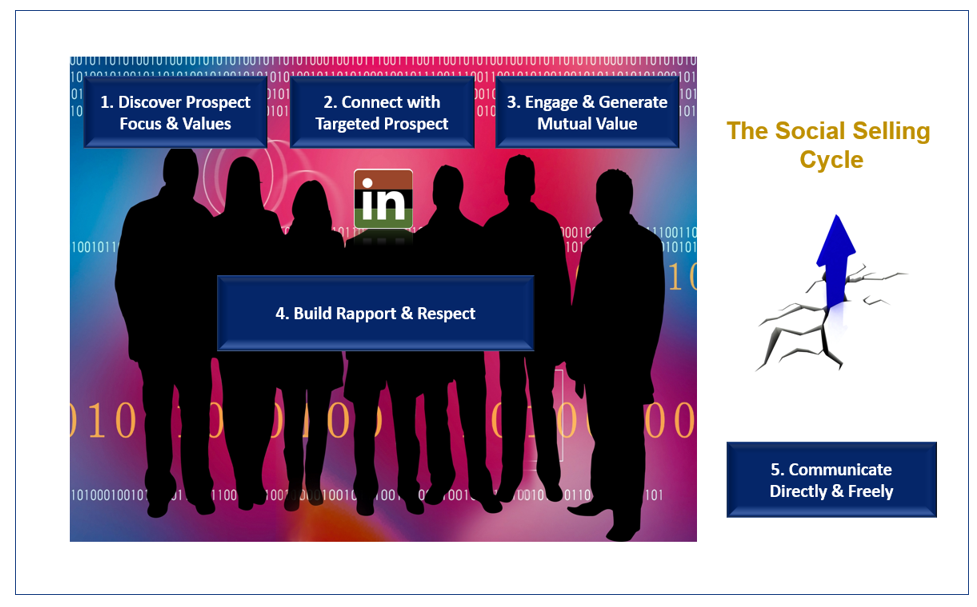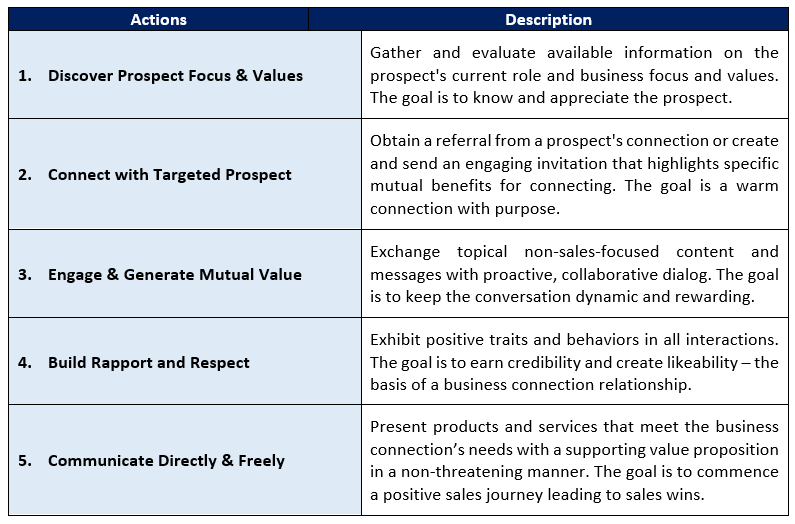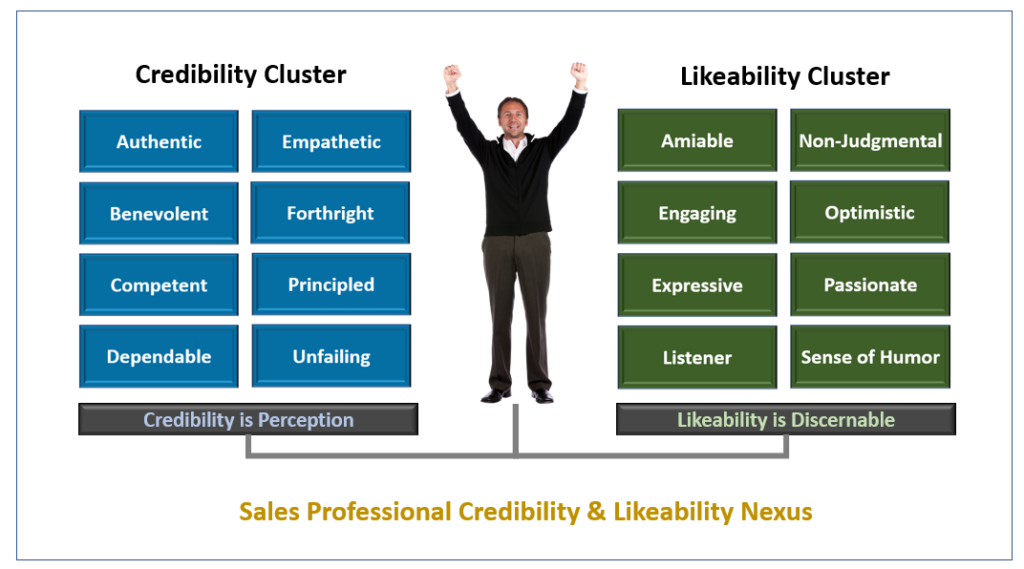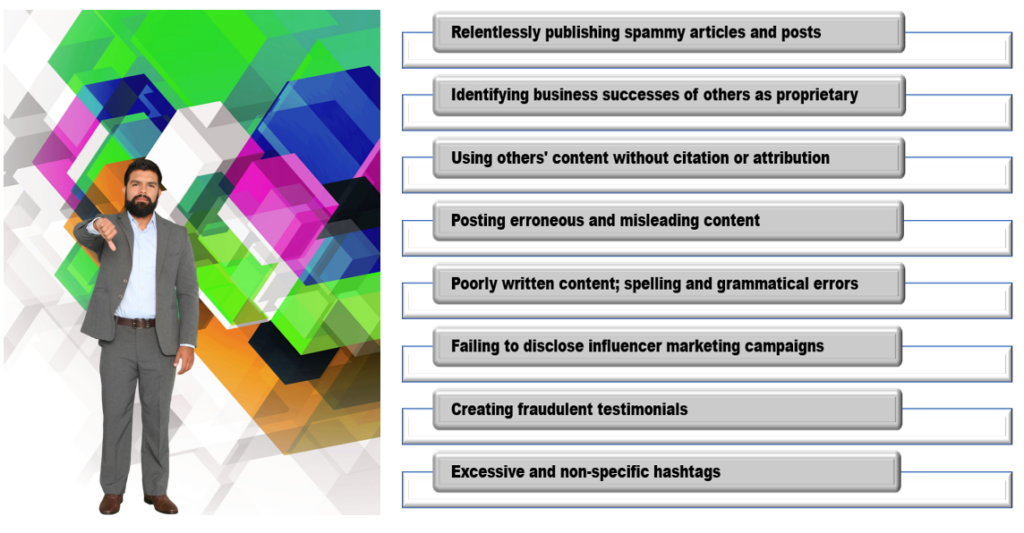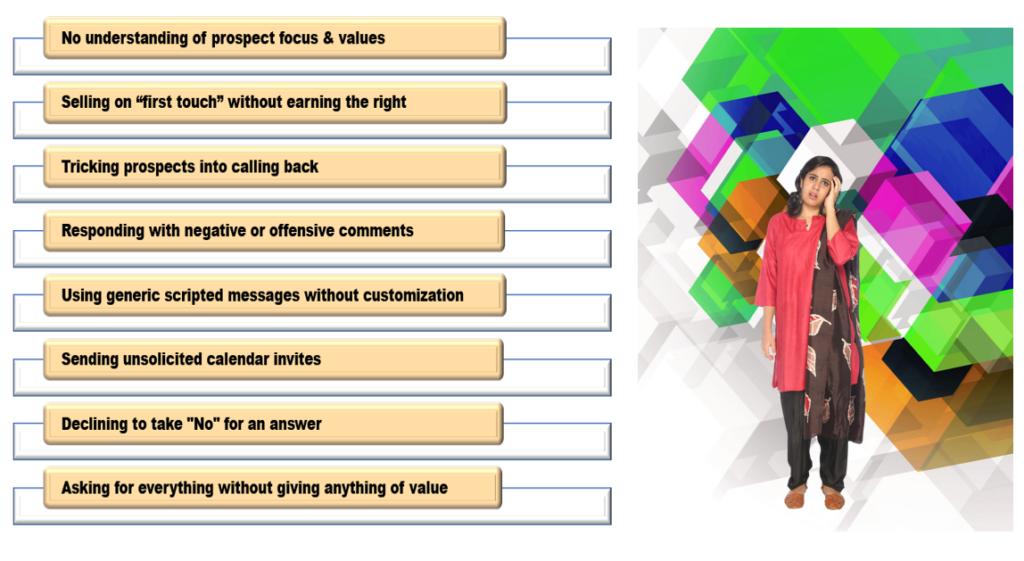Introduction
Every marketing executive dream of having affordable and unfettered access to extensive B2B decision-maker prospects! LinkedIn fulfills this vision in many ways, as it provides a platform enabling access and connection with targeted market segment and business interests. With 675 million monthly users and more than 100 million professionals engaged daily, and 61 million identified as senior-level influencers. The potential for attracting interest in a company and its offerings is significant! Unlike Facebook, Twitter and Instagram, LinkedIn is a business-focused platform with content, interactions, and events dedicated to user business success.
LinkedIn provides a critical platform channel for B2B businesses to support social marketing and sales activities. The below graphic highlights the LinkedIn Value Proposition’s capabilities and potential outcomes for corporate users.
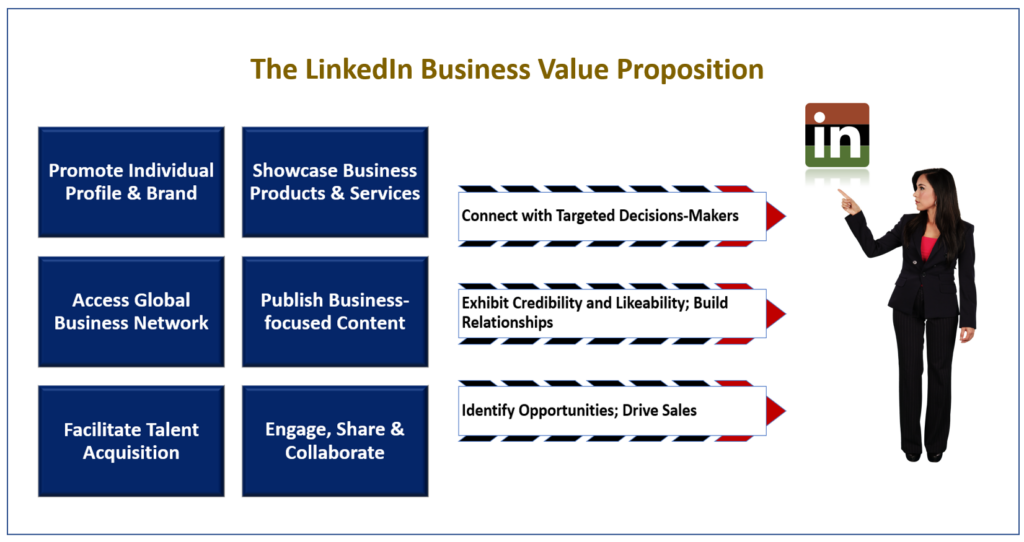
LinkedIn is well-recognized as the most-used social media site amongst Fortune 500 companies. With daily responsibilities taking a heavy load in their already demanding workday, one must wonder why their top employees invest valuable time engaged with a social media platform? The open secret is that senior business executives and managers believe in the value of networking and collaboration and are passionate apostles of the social selling approach, especially Millennials Y and Z generational individuals.
On LinkedIn, incessantly pushing products and services, spamming, and obvious hard-selling techniques limit successful relationship-building and turn-off most decision-makers. For most users, establishing win-win connections is a prime short-term goal and a prerequisite to evolving long-term revenue-impacting activities. Like other potential channels, social media requires an enterprise strategy to formalize policies and processes that align with its overall business goals while avoiding conflict with approved marketing and sales plans and practices.
The COVID-19 Impact
The COVID-19 crisis fueled massive business disruption with lockdowns, and physical event limitations have reset B2B sales models primarily to a virtual social experience. Sales strategies previously attractive and favored pre-pandemic may no longer be practical as corporate purchasing habits have evolved to meet workplace health and safety demands. The availability of affordable and user-friendly technology-based products and social media platforms has encouraged many businesses to upgrade systems and processes without difficulty to the new business reality. Although, some have experienced failure as their technology choices lacked strategic fusion with the appropriate policies and practices. Legacy marketing and sales strategies are ineffective in competing with innovative social selling.
Each of the LinkedIn capabilities shown in the above graphic can be a sensible starting point for crafting an updated B2B strategy with specific practices to demonstrate genuine corporate and personal authenticity to gain the trust and confidence of new connections. The outcome is a standard social media approach for supporting employees that sets the criteria and creates the practices for promoting and protecting the brand while generating potential sales opportunities with new business relationships.
In the virtual setting, B2B-focused businesses need to find the right approach to identify and interact with contacts and find common ground, to establish connections and rapport that would commonly develop from in-person experiences. Social selling is evolving as the ‘new normal,’ and businesses that cling to the traditional status quo are at significant competitive risk without strategic change and retooling.
